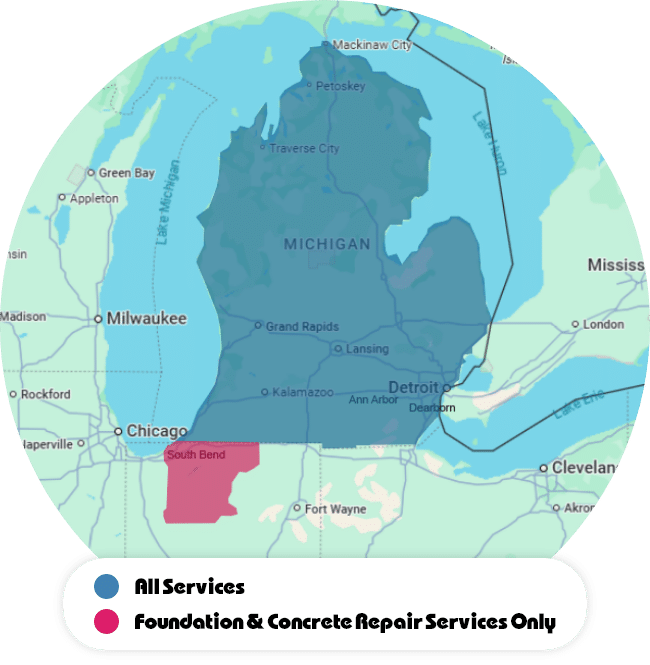Summer Droughts and Your Foundation

We’re in that phase of summer where it’s just hot and dry. The grass is dying or already dead, the ground is hard, your hose is putting in work as you try to keep your plants alive. It’s pretty miserable.
And then it rains - finally - and you have water in your basement when it seems like the ground could use it so much more. Honestly, it’s pretty rude. It’s also dangerous for your foundation.
To understand why it happens, and what you need to watch for, we first need to go a few layers of metaphor deep and think about the ground like that old dried out kitchen sponge you pretend not to have. That sponge is DRY, right? It’s on the ledge above the sink and it’s shriveled and hard and barely qualifies as a sponge.
That sponge is the summer drought soil.
What happens when you decide to use it and run it under the water? Does it instantly spring back to life and return to its supple, absorbent state? No, it doesn’t. It resists, and water runs right off of it for a solid 20 seconds before it finally penetrates that crusty exterior.
That’s what happens when we have a one off rain storm on the summer drought soil. The soil is so dried out that it almost has a shell, and it’s a lot easier for the water to run off than to make it through. And when it runs off, it’s going to go anywhere it can make some sort of inroad - which is often through existing cracks in a foundation. Water is strong but it’s also opportunistic, so it’s going to go with the path of least resistance. As it travels through foundation cracks it also widens them little by little. Over time, this repeating cycle can cause major cracks and bowing in your walls.
Now that we’ve talked about what the water itself can do, we need to discuss the soil itself. When soil dries out, much like that gross sponge, it shrivels up and shrinks. When the soil shrinks, it pulls away from your foundation, which can leave it unsupported and cause shifting.
Then, when it finally, finally rains, the soil expands rapidly. So now you not only have over-saturated soil sending excess water through those cracks we mentioned above, but as it expands it exerts pressure on your foundation walls, which are weakened from cracks.
And this happens multiple times in a summer.
Here’s what you can do.
First, watch for signs of water; in addition to actual water, these signs can include humidity, musty smells and staining on the walls and floor where water has come and gone.
Second, keep an eye on those walls. New or extending cracks, visible bulges, or any sign of daylight at the rim joist (where the walls meet the ceiling of the basement) are danger signs and should be dealt with immediately. A wall goes from slightly bowing to full collapse in less time than you’d think, and it’s easier and safer to stabilize and secure a wall than build a new one while trying to stop your home from collapsing.
Each drought cycle is a small assault on your foundation, and since you can’t control the weather, there are a few things you can and should do to monitor it. If you notice any of the above, the best thing you can do is call us.









